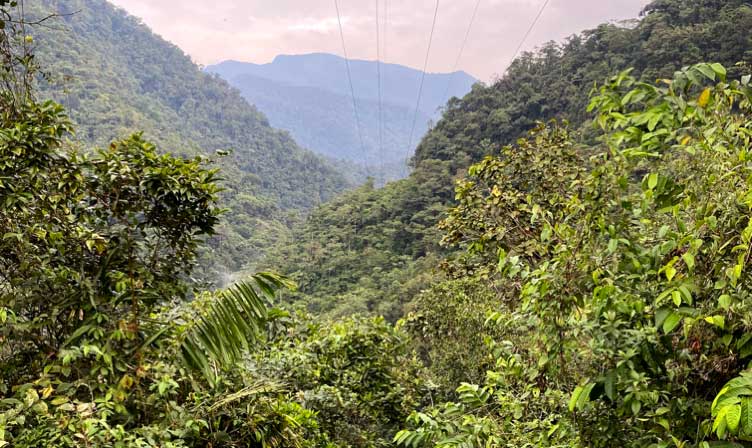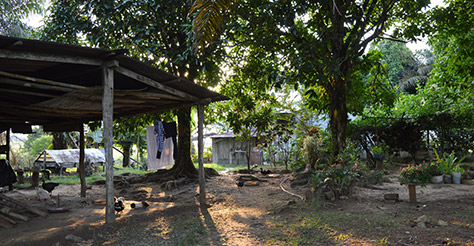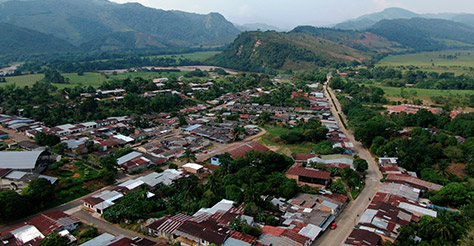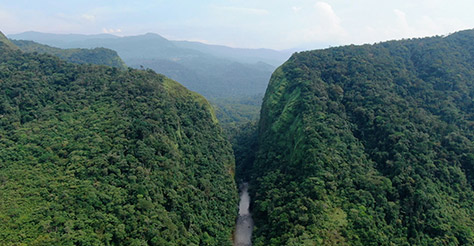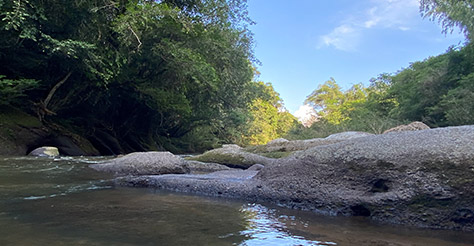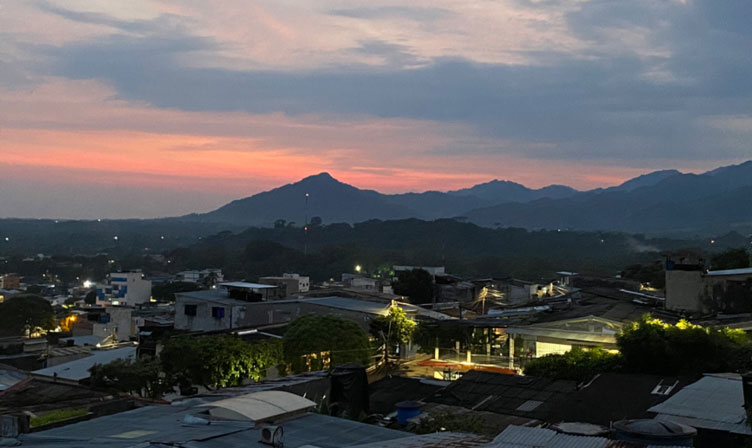Capítulo 2
CAQUETÁ, PIEDEMONTE AMAZÓNICO
El Caraño
El Caraño es un corregimiento ubicado al noroeste de Florencia (Caquetá), limitando con el Huila y se halla conformado por 36 veredas. Es una zona rural del municipio y tiene una importancia biológica muy alta por hallarse ubicado en las estribaciones de la Cordillera oriental, donde nacen numerosos riachuelos que luego se juntan para formar los ríos Caraño y río Hacha que se encargan de proveer de agua a toda la población urbana de Florencia.
Esta zona está poblada en su mayoría por campesinos que trabajan la tierra y siembran diferentes productos como plátano, café, cítricos, etc. Algunos de ellos, en alianza con Patrimonio Natural a través del Programa C&G, han trabajado en el proyecto de incentivos a la conservación para proteger las fuentes hídricas que garantizan la vida de la región.
Entrar al universo sonoro de esta región es sumergirse en sonidos de numerosos cursos de agua, cantos característicos de aves de la región inclusive algunos que, según creen sus habitantes, anuncian presagios. Además de la gran diversidad sonora de la naturaleza se puede escuchar la voz de la gente de la región invitándonos a cuidar y a recuperar nuestros ecosistemas.
Paisajes Sonoros
Detente y escucha profundamente lo que la naturaleza tiene para decirnos.
Voces de la Gente
Historias y experiencias de las comunidades.
El Capítulo Caquetá de la Plataforma VozTerra ha sido posible gracias al apoyo de la Agencia de los Estados Unidos para el Desarrollo Internacional(USAID), bajo el Programa Conservación y Gobernanza en el Piedemonte Amazónico, puesto en marcha por el Fondo Patrimonio Natural y en alianza con VozTerra. Su contenido es responsabilidad de VozTerra y no refleja necesariamente la opinión de USAID o el gobierno de los Estados Unidos ni del Fondo Patrimonio Natural.





